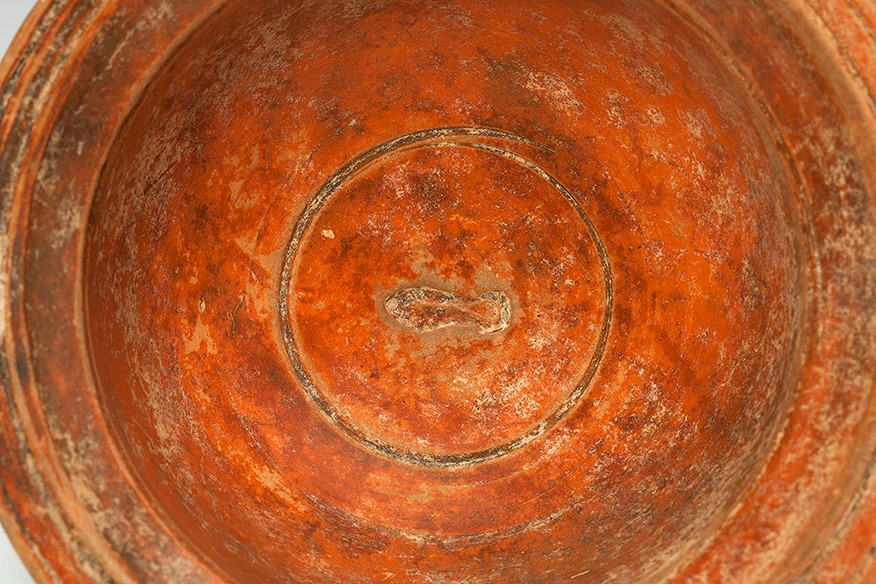Acquisition number: 1966.69
Intact but the surface is worn in places, particularly on the outside. Ring foot; modelled lip slightly concave on its upper face; on the inside there is a groove at the junction with the wall. At the bottom on the inside is the impression of a stamp of a sandalled foot within a grooved circle. Red glaze mottled to black through uneven firing; fingermarks about the base.
Title: Roman Red-Slipped Bowl - 1966.69
Acquisition number: 1966.69
Author or editor: J.R. Green
Culture or period: Roman Imperial
Date: 1st - 2nd century AD.
Material: Clay - Terracotta
Object type: Vessels - Bowl
Dimensions: 104mm (w) × 45mm (h)
Origin region or location: Italy
Display case or on loan: 12
Keywords: Roman, Imperial, Red Slip, Stamp
Folio Fine Art Ltd (London), Catalogue 40 (September 1966) no. 193; J.R. Green with B. Rawson, Catalogue of Antiquities in the Australian National University, A.N.U. (Canberra, 1981) 78.
1966.69
Roman Red-Slipped Bowl
Purchased. Ht 4.5cm; diam. 10.4cm.
Intact but the surface is worn in places, particularly on the outside. Ring foot; modelled lip slightly concave on its upper face; on the inside there is a groove at the junction with the wall. At the bottom on the inside is the impression of a stamp of a sandalled foot within a grooved circle. Red glaze mottled to black through uneven firing; fingermarks about the base.
Stamps in the form of feet are not uncommon on Roman pottery but they usually contain abbreviations of the maker’s name instead of being simply decorative: see A. Oxé and H. Comfort, Corpus Vasorum Arretinorum (Antiquitas 3, 4, Bonn 1968) passim. For useful general comments, though with little specific to objects such as these, see K.M.D. Dunbabin, “Ipsa deae vestigia ... Footprints Divine and Human on Graeco-Roman Monuments”, Journal of Roman Archaeology 3, 1990, 85-109.
First-second century AD.
Folio Fine Art Ltd (London), Catalogue 40 (September 1966) no. 193; J.R. Green with B. Rawson, Catalogue of Antiquities in the Australian National University, A.N.U. (Canberra, 1981) 78.

